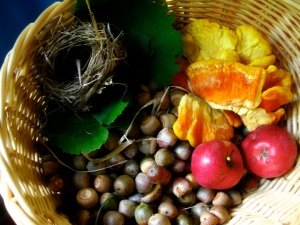Foraging can be one of the most fun outdoor activities and provide you with an endless source of seasonal (and free!) edible food. Here are 7 tips to foraging safety so you can enjoy wild edibles without worry.
7 Tips to Foraging Safety
- Learn Scientific Names
Common names can easily get lost in translation or be misidentified. Learn the scientific names of all edible plants and use a reference guide in the field to make sure you’re foraging the right plants.
- Study Lookalikes
Many wild edibles, especially mushrooms, have poisonous lookalikes a novice forager can misidentify. If you’re a beginner or there are many poisonous lookalikes in your region, harvest only the ones you can be sure of.

Photo: Brian Glanz
- Know Your Region
There may be many obvious and easy to identify plants in your region you can eat. Study up on what’s common and you’ll be able to identify them when you’re on the go.
- Study Companion Plants
Lots of wild edibles have companion plants they commonly grow near. These plants grow in similar habitats and can help tip you off to a patch of wild, safe edibles.
- Don’t Overeat
Many wild edibles have medicinal purposes that could cause a build-up and overdose in your system if you eat too large or a quantity. Eat everything you forage in moderation and try not to mix with alcohol, which can cause unknown reactions in your body.

Photo: Ryan
- Know Which Part of the Plant to Pick
Many edible plants only contain certain parts that you can consume. For example, chestnuts are poisonous only until you grind and boil them. Before eating anything unfamiliar, do you research on how to prepare it and what parts are safe.
- Only Harvest What You Need
Foraging is only sustainable if you never pick all you see. Plants need to keep seeds and leaves so they can continue to grow and reproduce. Never take all of the seeds off a plant or you won’t be able to forage from it again.
As always, never eat anything you can’t positively identify with certainty. While nature can provide us with an incredible bounty of free edibles, it can also seriously harm you. Good luck to foraging safely and happily!
Feature Photo: Fred Benenson
Elizabeth Adan is a Freelance Writer, Publicist and Brand Ambassador. Her blog Aquaberry Bliss is a unique food and travel blog dedicated to expanding your world and inspiring your creativity. When Elizabeth isn’t traveling, you’ll find her writing, hiking or gardening. Find Elizabeth on Twitter @stillaporcupine and on LinkedIn.



[…] many interesting and practical articles on Aquaberry Bliss, I’d like to share this post: A Guide to Foraging Safety: 7 Tips It serves as a good reminder in basic foraging 101. But please don’t just stop there. Be […]
LikeLike
Thanks for sharing!
LikeLike
Great tips! I’m very, very cautious when foraging. When I’m in doubt, I try to get someone knowledgeable to identify the plant. It’s kind of funny, because I completely avoided the “weird” apples on one of our trees, our first year. Turns out they’re wonderful crab apples! They’re weird-looking because crab apples are so sour, worms won’t touch them.
LikeLike
How funny! That’s awesome you have crab apples growing in your yard. I am always very cautious too, I rely a lot on research to make sure I’m absolutely sure I know what I’m eating. =]
LikeLike